Today we are taking a look at what might be the best SSD on the market today. The Kioxia CM7 has one thing that other mainstream enterprise drives do not have. It is a PCIe Gen5 NVMe SSD. With that said, it is also a first-gen NVMe SSD launching a year before many of its competitors that have still not shown up. In this review, we are going to take a look at the Kioxia CM7 to see what it has to offer.
Kioxia CM7 PCIe Gen5 NVMe SSD Overview
The Kioxia CM7 is the “CM” series SSD which means it is the company’s enterprise offering. On the other hand “CD” is the company’s “data center” series of drives. We expect more performance per drive from the CM series at this point.
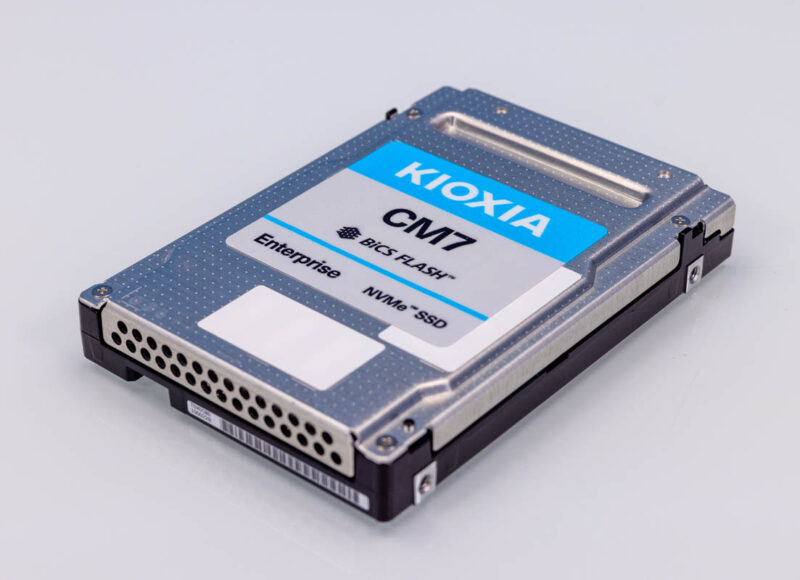
We previously covered the Kioxia CM7 as it was one of the first PCIe Gen5 NVMe SSDs we saw on the market. Even today, Solidigm and Micron, as examples, do not have PCIe Gen5 enterprise SSDs out. There is a good chance that those companies will see their first generation PCIe Gen5 NVMe SDDs launch around the time of a second-gen drive from Kioxia at the rate we are going.
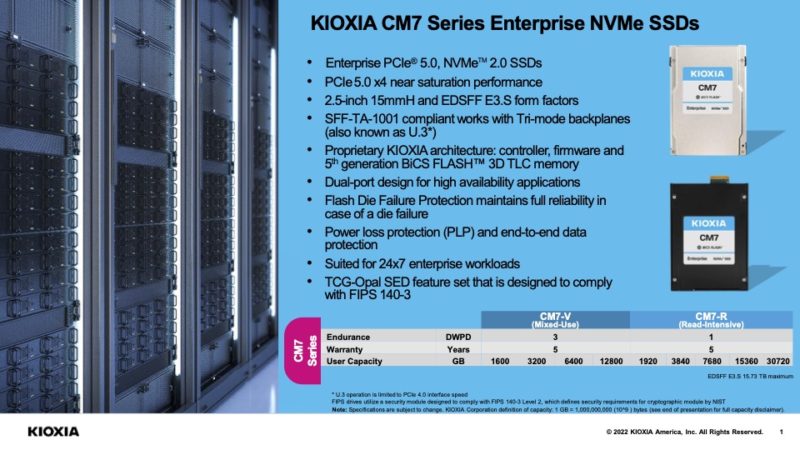
This is a 3.2TB capacity point that puts it in the CM7-V series for mixed workloads at 3 DWPD. On the other hand, CM7-R is the company’s read-optimized 1 DWPD option. The big difference is the amount of overprovisioning.
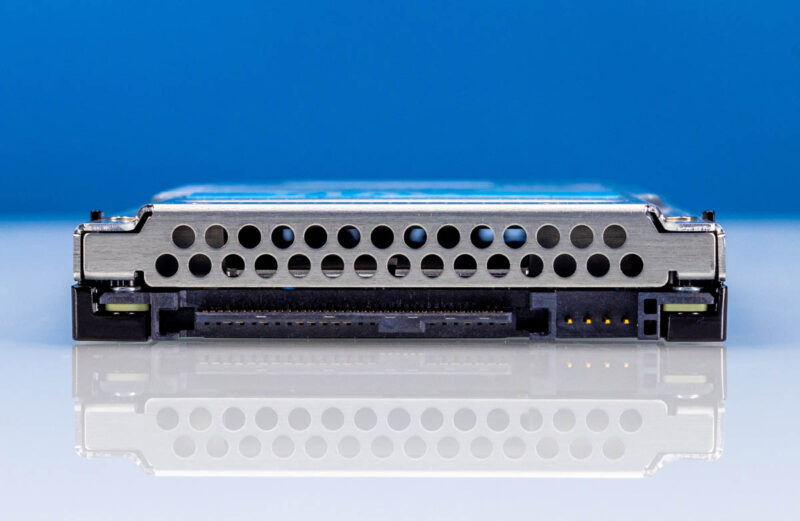
The 2.5″ drive we are looking at today (there is also an EDSFF E3.S version) is only 3.2TB, one of the smaller drives we have looked at recently.
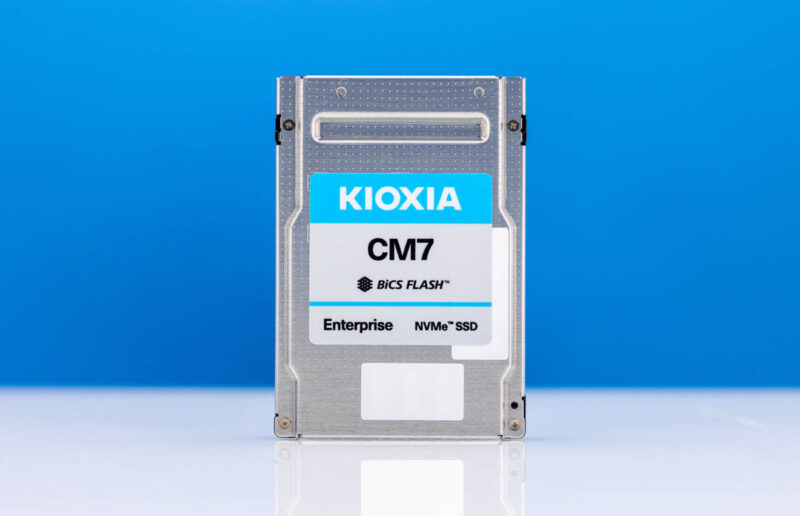
Here is the other side of the drive.
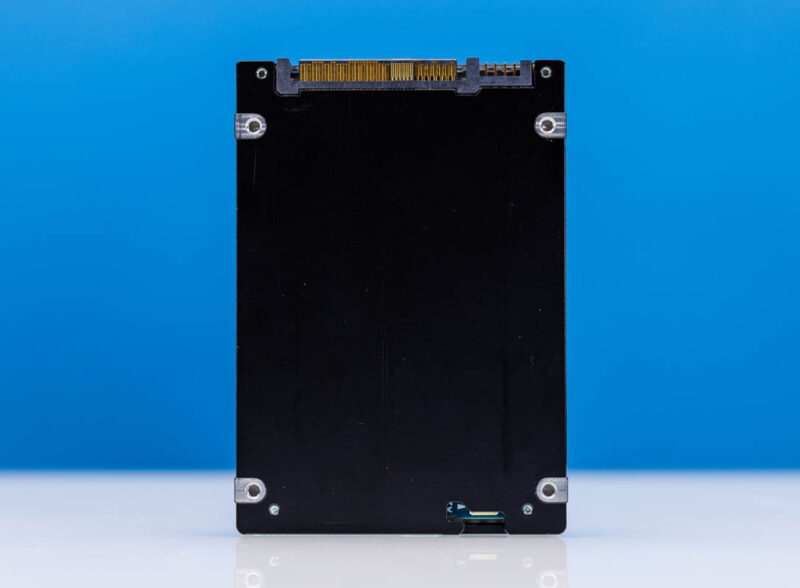
Next, let us take a look at performance.

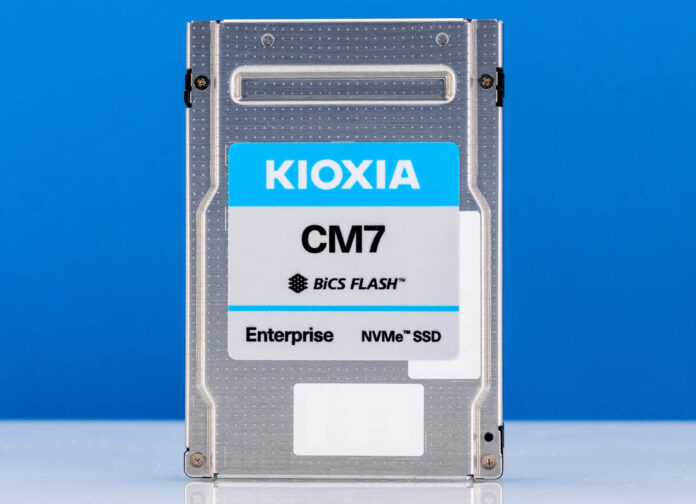



The article states “We have all of these working on x86 but we do not have all working on Arm and POWER9 yet.” Since Power9 is PCIe4 and this is a PCIe5 drive, maybe Power10 would be a better choice.
How does it match up with the Crucial T700? I see that is conspicuously absent from the comparisons.
bifurcation on 16x slot. 4×4 gen4 Raid10 . quad nvme gen4 1tb get you 2tb storage… match these speeds. been here for a while…
T700 absent because consumer drives are not in the comparison – only DC/Ent drives.
And also, consumer drives are peaky in speeds, they don’t keep their performance for long because most of the performance comes from the dynamic SLC cache.
DC and enterprise drives do not do SLC caching and are far more consistent.
Partly because they have a lot of channels than consumer SSDs do.